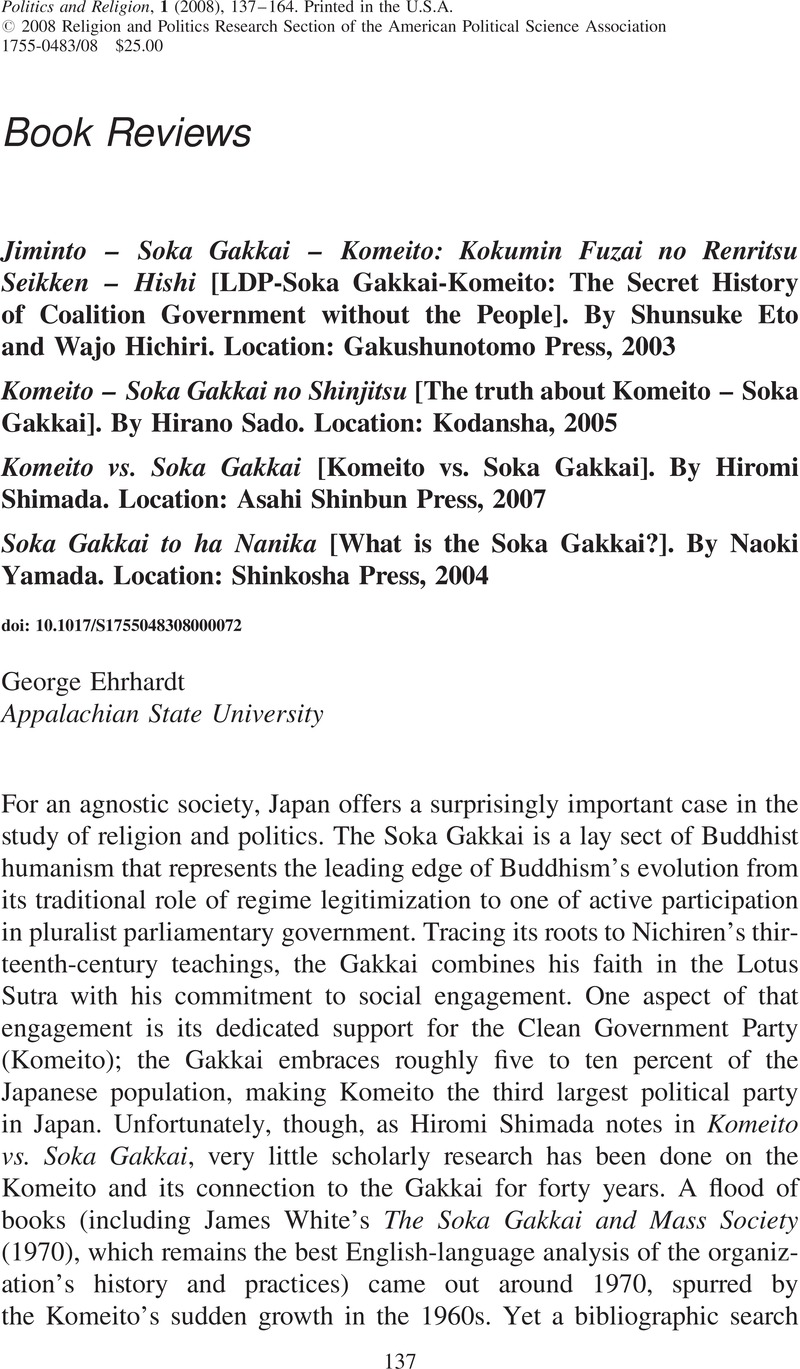Crossref Citations
This article has been cited by the following publications. This list is generated based on data provided by Crossref.
EHRHARDT, GEORGE
2009.
Rethinking the Komeito Voter.
Japanese Journal of Political Science,
Vol. 10,
Issue. 1,
p.
1.
Baffelli, Erica
2010.
Sōka Gakkai and Politics in Japan.
Religion Compass,
Vol. 4,
Issue. 12,
p.
746.





